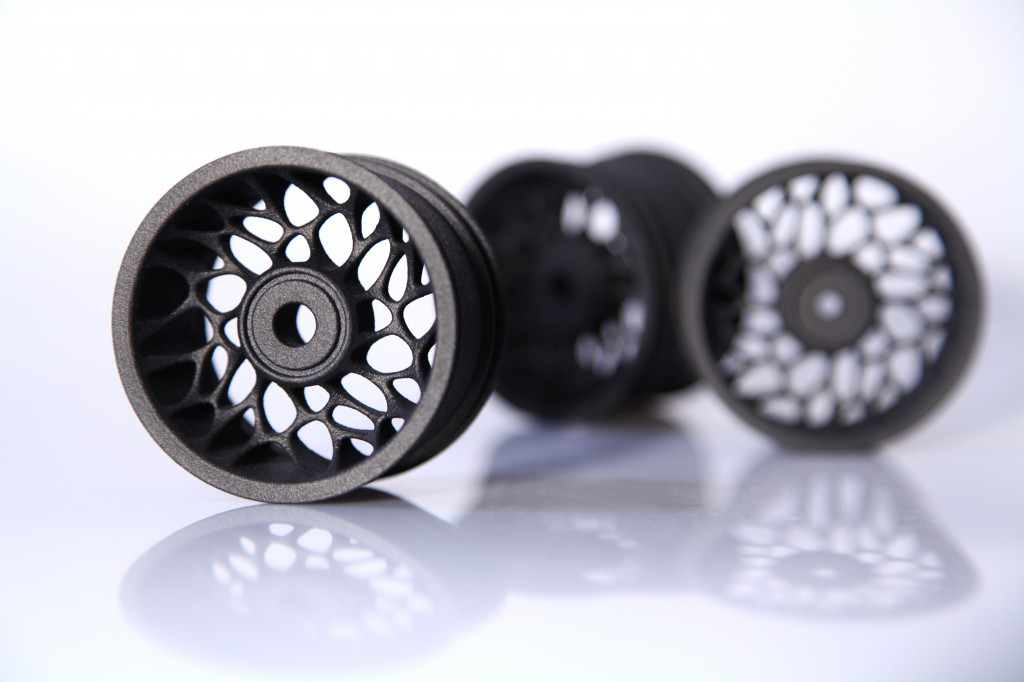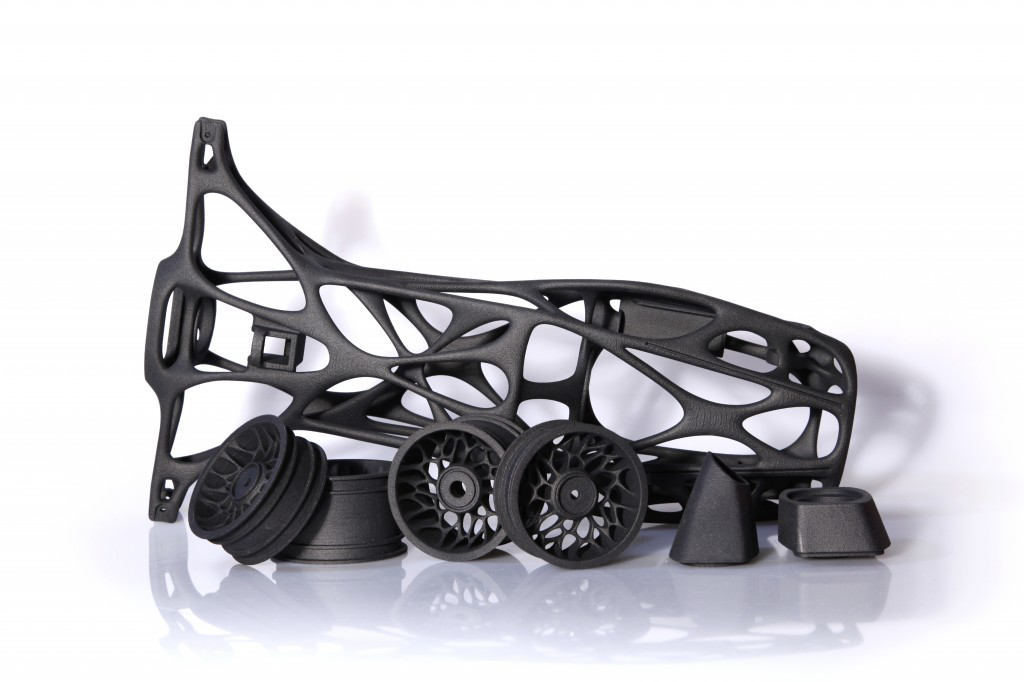Pasadena’s Art Center College of Design has a unique approach to the field of art, driving students to be their most creative, while, in the background, preparing them to apply their skills to the world of gainful employment. Art Center’s annual Formula-E Rubber Band Car race is a prime example of how students combine practical physical principles with otherworldly designs. The event has become so popular that it now attracts teams from around the world, including, this year, at least three schools from China and a professional team from Matel. One team of students, in particular, demonstrate how innovative the school’s graduate industrial design program can be, drafting a car so elaborate that it could only be made with 3D printing.
Ian Cullimore, Sameer Yeleswarapu and Max Greenberg designed their rubber band car with an organic, interweaving pattern that couldn’t be produced with the range of CNC machines and the like in their school. Greenberg explains the inspiration behind the car’s intricate design, “Our team focused on creating a vehicle that would combine all our past engineering education with the sculptural and aesthetic expertise taught at Art Center. We drew inspiration from mid-1950s Formula-I cars as well as the truss structures found inside the bones of a bird’s wing. These structures are both light and rigid, ideal properties for the car we wanted to design.”
The miniature autos were to be launched by a 16ft rubber band, sending the cars down the track at speeds up to 30 mph across a few hundred feet, with braking and steering controlled by two servo motors. Art Center’s own Z-Corp 3D printers could only fabricate a prototype, which exploded during their trial run. To find something that would survive the power of the rubber band, the team turned to the rapid manufacturing experts at Stratasys-owned Solid Concepts, with its branch in the nearby San Fernando Valley.
Using the subsidiary’s Selective Laser Sintering (SLS) technology, the team printed their final car in Nylon 12, creating a total of seven parts: the main body, wheels, and the car’s front and back nose cones. Greenberg continues, “The SLS technology at Solid Concepts allowed us to be completely unconstrained in developing the geometry, without any consideration for removing support material or post-processing. The part came straight out of the machine ready for assembly with a beautiful finish.” A final carbon fiber tube was then inserted into the car’s body to hold the rubber band, wound up and let go through a remote controlled mechanism to give the car it’s first launch.
And, because of this elegant design, the team took home both the the Axial Racing Design award and the Eckles Design, Build and Approach Award this August. No word yet on when Local Motors will be 3D printing these babies for the average consumer.





